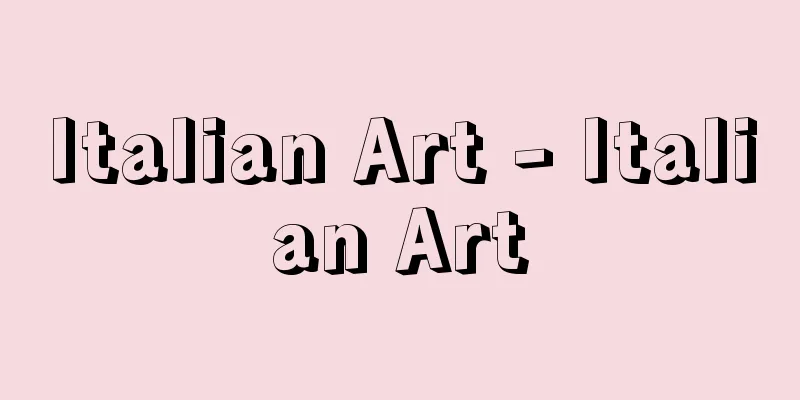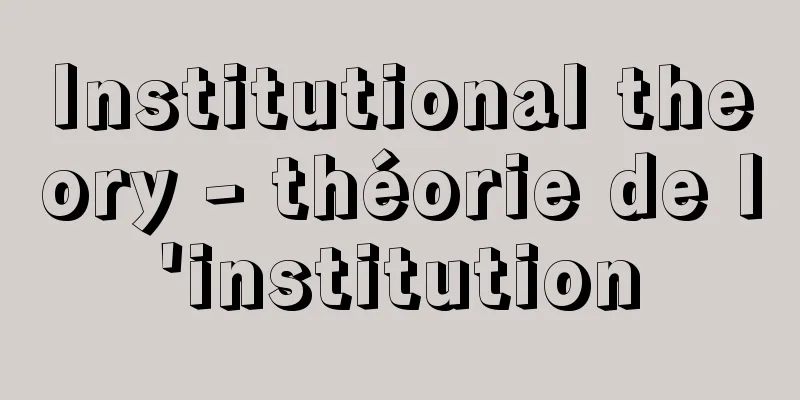Italian Art - Italian Art

|
Regardless of the significance of ancient Rome and the Renaissance in world history, the history of art in Italy, which experienced repeated periods of rise and fall, was closely related to the basic trends of European art in many aspects. In other words, only Italian art can consistently grasp the transition of artistic styles from ancient times to modern times. It was only from the Romanesque period onwards that Italian art acquired its own unique characteristics, but the traditions of ancient Rome regulated the characteristics of Italian medieval art and also had an important relationship to the emergence of Renaissance art. Ancient Roman architecture, topped with voluminous vaults inherited from Etruscan art, had a so-called international style common to cities in the Mediterranean region, such as Rome and Antioch. In contrast, sculpture, metalwork, ivory carving, and other art forms mixed with those of the various territories as the empire expanded, creating their own unique styles. However, the victory of Christianity denied the worldly humanism that had existed up until then, and rebelled against artistic expressions that affirmed it. As a result, three-dimensional human figures and expressions of real space with depth were strictly prohibited. [Katsuya Hamatani] middle ages5th to 9th centuriesThe decline of the Roman Empire brought about the replacement of political bases and the fluctuation of the power relationship. In Ravenna, the rule of the Latins (the general term for Western Europeans at that time) was taken over by the Goths, who then annexed it to the Byzantine Empire. During the imperial period of rule (540-751), which lasted for about two centuries, the Basilica of Sant'Apollinare Nuovo, the Basilica of Sant'Apollinare in Classe, the Basilica of San Vitale, and the Mausoleum of Galla Placidia were built. The Byzantine art tradition that took root in Ravenna was later inherited by Venice, which built St. Mark's Basilica in 829. Meanwhile, the invasion of northern Italy by the Lombards in the second half of the 6th century promoted the development of metalwork in the region, and the conquest of southern Italy and Sicily by Muslims from the first half of the 9th century left traces of the influence of Islamic art in the decorative designs of the cathedrals of Amalfi, Palermo, and Monreale. From the mid-7th century in the Lombardy region of northern Italy, architects known as maestri comacini produced heavy, simple architecture, foreshadowing the emergence of the Romanesque style. [Katsuya Hamatani] RomanesqueFrom the late 10th century to the 12th century, Italy was embroiled in political upheaval such as the establishment of the Holy Roman Empire, the Crusades, and the conflict between the Papacy and the Imperial Power, yet it left behind many original works of Romanesque art. In terms of architecture, the Basilica di Sant'Ambrogio in Milan, which was the first in Europe to use ribbed vaulting, and the cathedrals of Modena, Parma, and Ferrara, which are based on basilica plans, are considered representative examples. In addition, the sculptures created by sculptors Wiligelmo/Viligelmo (date of birth and death unknown) and Benedetto Antelami in the cathedrals of Modena and Parma show French influence. The base of Byzantine art, which spread to Verona (Basilica of San Zeno), was in Venice, but it was not until 1094 that St. Mark's Basilica was rebuilt and dedicated there using plans derived from Constantinople. Tuscan architects established their own style, using polychrome marble to decorate simple forms, as in the Basilica of San Miniato in Florence and the Cathedral of Pisa. In southern Italy and Sicily, which were under Norman rule, a unique style that blended Byzantine, Islamic and Norman elements remains in the cathedrals of Amalfi, Cefalù and Palermo. [Katsuya Hamatani] GothicThe Gothic style, which had been spreading widely throughout Western Europe north of the Alps since the mid-12th century, began to spread to Italy in the 13th century. The imprisonment of the Pope in Avignon and the decline of the Holy Roman Empire in the early 14th century led to the establishment of city-states throughout Italy and the accompanying momentum for urban development. Of these, Florence was the most active in terms of construction, with the Basilica of Santa Croce, the Basilica of Santa Maria Novella, Florence Cathedral, and Palazzo Vecchio being constructed, and plans were also made to build the cathedral's campanile (bell tower) and cupola (round roof). Meanwhile, in sculpture, Nicola Pisano established his own unique style by incorporating narrative elements into the classical style, and trained disciples such as his son Giovanni Pisano, as well as Arnolfo di Cambio and Tino di Camaino (c. 1285-1337). The sculptural style developed by this school came to dominate Italian art in the late 13th century. In painting, Giovanni Cimabue inherited the Byzantine style, while Pietro Cavallini and Jacopo Torriti (date of birth and death unknown) developed narrative expression while following the traditions of ancient art. Giotto further developed this style and showed innovative realism in his portrayal of figures, leaving behind a notable achievement in the history of art. Duccio of the Sienese school was a delicate colorist, but his student Simone Martini was the standard-bearer of the Gothic style in the area. Pietro Lorenzetti inherited Giotto's narrative expression, and his brother Ambrogio Lorenzetti was the first landscape painter. In the mid-14th century, the decorative and gorgeous late Gothic style became popular in painting, but in the midst of this, Andrea Orcagna created a bold and unique style. One of the notable architectural achievements of this period is the architectural design of such civic buildings as the Palazzo Ducale and Ca' d'Oro in Venice. [Katsuya Hamatani] Renaissance15th centuryIt was in the first half of the 15th century in Florence that the art of Italy began to break away from the Gothic style that had been so prevalent in Italy since the beginning of the 13th century. During this period, Lorenzo Ghiberti worked on the two doors of the Baptistery, which took half a century to complete, Donatello reached his maturity by completing his early works in the Cathedral and the Basilica di Or San Michele, and Filippo Brunelleschi completed the cupola of the Cathedral. All of these artists absorbed and digested the classical style and applied it to their contemporary artistic production. Leon Battista Alberti also tried to pioneer a new style by theoretically studying ancient architecture. Furthermore, the influence of the classical style on the traditional style from the Middle Ages cannot be overlooked in the wall-mounted tombstones created by Bernardo Rossellino and Desiderio da Settignano (1430?-1464). The greatest driving force behind the modernization of Florentine painting was Masaccio, who built on Giotto's style and developed it further, demonstrating his outstanding talent for the depiction of stately figures and perspective. Domenico Veneziano combined the Florentine school's anatomical and perspective studies with his own unique color technique. Fra Angelico initially learned a lot from these two painters, but eventually returned to the Gothic style and became deeply immersed in it. The rest of the country, however, was somewhat different from Florence. In Siena, Sassetta still clung to the Gothic style, while in Umbria, Piero della Francesca combined bright colors with geometrically ordered compositions to create a unique style in his paintings. In Padua in northern Italy, Andrea Mantegna, deeply influenced by Donatello and ancient art, established a robust, sculptural style of painting. Venetian painting in the 15th century is typified by the Bellini father and son. Jacopo Bellini, who grew up being influenced by the Gothic style, established his own style based on perspective painting. His son Gentile Bellini excelled in poetic narrative expression and paid particular attention to the use of light, while his younger brother Giovanni Bellini was deeply influenced by Mantegna and Antonello da Messina through his contact with them, and perfected a tranquil and elegant style of painting. The end of the 15th century saw some notable innovations in artistic expression. In architecture, Donato Bramante and Leonardo da Vinci came up with the idea of a centralized plan for a cupola-centered cathedral. In sculpture, Andrea del Verrocchio applied the effects of light to enhance the expressive effect of motion. Sandro Botticelli, who liked to paint Venus and the Virgin Mary, enhanced the poetic sentiment with delicate expressions that combined formalization and idealization, and this painter's taste for Gothic can be felt in this. Leonardo also invented the so-called "sfumato" style, which depicts subtle changes in light and dark in three-dimensional expressions and softly blurred contours. However, his interest extended to all visual objects, and he strived to be a uomo universale (a man of universals) in person. [Katsuya Hamatani] 16th centuryIn the 16th century, the center of art production moved to Rome. Bramante, who was the driving force behind this, was tasked by Pope Julius II with a plan to integrate the various buildings in the Vatican, and began by designing the new St. Peter's Basilica. His design was changed by his successors, and the work did not progress smoothly, but Michelangelo appeared in his later years and greatly promoted it, but it was never completed. The cupola was also completed posthumously using a wooden model that he had made himself. Raphael, who was recommended by Bramante, produced murals in various places in the Vatican, and his outstanding ingenuity was shown in the ideas, composition, and dramatic effects. Michelangelo, who called himself a sculptor, often treated painting and architecture in a sculptural way, and his ideas are well realized in the murals and ceilings of the Medici Chapels and the Sistine Chapel. The mainstream of 16th century Venetian art was painting. The ideal was a warm color scheme that made the most of the light, and this was steadily realized by Giovanni Bellini in his old age, Giorgione in his prime, and Titian in his youth. In addition, Correggio, who was in Parma, produced sensuous paintings full of light and movement, worthy of being a pioneer of the Baroque style. [Katsuya Hamatani] MannerismThe Counter-Reformation movement that began in the second half of the 16th century gave rise to a religious spirit accompanied by sensual intoxication. As a result, a style called Mannerism, characterized by sharp contrasts between light and dark and brilliant colors, appeared. The architect Giulio Romano, who was active in Mantua in northern Italy, and the painter Parmigiani of Parma were pioneers of this style. In Florence, sculptors such as Baccio Bandinelli (1488/1493-1560), Bartolomeo Ammannati, and Giambologna (also known as Giovanni da Bologna or Jean Boulogne, 1529-1608), as well as painters such as Pontormo, Rosso Fiorentino, and Agnolo Bronzino, each demonstrated the ingenuity and technique appropriate to this style. In the region around Venice, architects such as Andrea Palladio attempted to revive classical styles, but their external effects showed the characteristics of Mannerism. In Venetian painting, Tintoretto, Boniface Veronese and Leandro Bassano are noteworthy for their unique compositions and colors. An example of Mannerism in Roman architecture is the Basilica of the Gesu, designed by Giacomo Vignola. [Katsuya Hamatani] BaroqueRome, the home of the Catholic Church, regained its authority in Europe through the Counter-Reformation, and once again took the lead in art production in the 17th century. Artists began to show a tendency to remove the limitations of architecture, sculpture, and painting and to fuse them into a single entity. A representative example of this tendency, called the Baroque style, is the colonnade in St. Peter's Square, designed by Giovanni (Gian) Lorenzo Bernini. This building, as well as the cathedrals designed around it by Pietro da Cortona and Francesco Castelli Borromini, all attempted to appeal to the senses with the authority of the church through bold geometrical forms. Bernini's works, which are representative of this era as a sculptor, are undeniably excessive in their technique, which comes with an emphasis on emotional expression. 17th century painting is best represented by Caravaggio and Annibale Carracci, who both lived in Rome at the time. Caravaggio's exaggerated naturalism, characterized by powerful figures and artificial light, had an influence abroad. Meanwhile, Carracci, who was strongly influenced by Raphael, nurtured Domenichino and Guido Reni with his more academic style of painting. [Katsuya Hamatani] Modern and Contemporary19th centuryIn the mid-18th century, the stirrings of Neoclassicism began in Italy as a reaction against Baroque. Inspired by the excavations at Pompeii and the activities of Johann Joachim Winckelmann and Anton Raphael Mengs during their stay in Rome, this was a new trend that sought models in classical art and tried to conform to them. The sculptor Antonio Canova was one who was in tune with this trend and showed a talent worthy of it. Romanticism hardly penetrated Italy, but in the 19th century, only Giovanni Segantini, known for his symbolic landscapes, and a group of painters called the Macchiaiolo (Pointillism) left works that reached a European standard. [Katsuya Hamatani] 20th centuryUntil World War IIThe start of the 20th century in Italian art was Futurism, proclaimed by the poet Filippo Marinetti in the magazine Le Figaro on February 20, 1909. This movement praised the speed, power, and even noise that became prominent in the machine civilization, and was willing to engage in destructive acts to express these new sensations. Members of this movement included Marinetti, Giacomo Balla, Gino Severini, and Umberto Boccioni, but it came to an end in the mid-1910s when World War I broke out and Boccioni died young. However, it is significant that this movement, which consciously sought to integrate the genres of poetry, painting, sculpture, theater, and music under a single creed, took place in Italy rather than in Paris, the center of art at that time. It also had a significant influence on later art movements such as Dada, Russian Rayonism, and British Vorticism. Of course, some artists were drawn to Paris, where De Chirico perfected his style of metaphysical painting, and Modigliani produced sculptures and portraits that combined the simple formal sensibility of African-American sculpture with graceful Tuscan curves. [Kenjiro Hosaka] Post-World War IIAfter the Second World War, Renato Guttuso (1912-1987) was a leading painter, and the New Art Front movement was supported by an interest in socialist realism. In the 1950s, Lucio Fontana promoted the Spatialism movement in Milan. Piero Manzoni (1933-1963) was influenced by Fontana and Alberto Burri. Known as a pioneer of monochromaticism, his works, such as canned his own excrement, were experimental in their aim to reconstruct the distance between material and spiritual while nullifying the boundary between art and artist. This approach was inherited and developed by Arte Povera, which represents postwar Italian art. The term "poor art" refers in a broad sense to a new artistic trend seen in Italy from the late 1960s to the early 1970s, which directly used materials that were considered "poor" by conventional standards, such as wood, glass, cloth, and water, to create conceptual works that expressed doubts about the existing values that had existed since the Renaissance. Representative artists of this trend include Michelangelo Pistoletto (1933- ), Giovanni Anselmo (1934- ), Luciano Fabro (1936-2007), Mario Merz (1925-2003), Jannis Kounellis (1936-2017), and Giuseppe Penone (1947- ). Around 1980, Neo-Expressionism (also known as New Painting) was gaining popularity worldwide, and in parallel with this, Sandro Chia (1946-), Francesco Clemente, and Enzo Cucchi (1949-) were the three artists who restored narrative and mythical qualities to painting. Known as the "3Cs" after the initials of their surnames, they represent the "Transavanguardia" movement, which Achille Bonito Oliva (1939-) defined as "apolitical, eclectic expression based on traditional expression." [Kenjiro Hosaka] ArchitectureIn architecture, the Fascist architecture of Giuseppe Terragni and others, which had a political function while also possessing the most extreme form of modernism, and the idea of "La Citta Nuova", a socialist proposal by Antonio Sant'Elia, were seen around the time of Fascism. On the other hand, the International Style, with the exception of Gio Ponti and others, did not flourish much. However, what represents 20th century Italian architecture is the method of combining clearly textured geometric shapes, sometimes adding primary colors as accents, as seen in Carlo Scarpa and Aldo Rossi, and this is a recognizable characteristic in design as well. Renzo Piano is also famous for replacing high-tech with simple and elegant forms. [Kenjiro Hosaka] designIn terms of design, the design studio Alchimia, which included Ettore Sottsass Jr. (1917-2007) and Alessandro Mendini (1931-2019), and its successor Memphis, led the design world in the 1980s. In addition, product designs by Giorgio Giugiaro and others, especially those for cars, are unrivaled. In terms of clothing design, Italy has continued to attract the attention of the world since young designers returned from France in the 1970s and launched their own brands. However, at the end of the 20th century, the independence of such haute couture-style clothing design became less visible as a result of capital alliances centered on Europe. In the midst of this, Benetton, a company that produces high-quality, low-cost clothing and aims to expand globally, used photographer Oliviero Toscani (1942-) to raise issues of highly mature capitalism, such as the relationship between advertising and ethics, and culture and consumption, in its own advertisements. As art becomes increasingly inseparable from capital, Italy has succeeded in remaining a center of the arts, hosting regular large-scale events such as the Venice Biennale for art and architecture, and the Milan Triennale for architecture, urban planning, design, and fashion. [Kenjiro Hosaka] "Art of Mankind 17: Italian Renaissance 1400-1460" by Ludwig Heinrich Heydenreich, translated by Maekawa Seiro (1975, Shinchosha)" ▽ "Art of Italy" by Anthony Blunt, translated by Nakamori Yoshimune (1978, Kashima Publishing)" ▽ "Collection of Essays on the History of Italian Art" by Masuyoshi Yoshiro (1979, Heibonsha) ▽ "Ecran Art of the World 7: Italy A: Ancient Roman Ruins and the Treasures of the Vatican" and "Ecran Art of the World 8: Italy B: Art Pilgrimage to Florence and the Ancient Capital of the Renaissance" (1981), edited and published by Shufu no Tomosha ▽ "Art of the World in Primary Colors 3: Italy 1: Uffizi Gallery" and "Art of the World in Primary Colors 4: Italy 2: Vatican Museums" (1987, Shogakukan) ▽ "Modern Italian Art 1880-1980" by Iseki Masaaki (1989, Ozawa Shoten)" ▽ "History of Italian Renaissance Art, Volumes 1 and 2, by Max Dvorak, translated by Nakamura Shigeo (1988, 1990, Iwasaki Bijutsusha)" ▽ "History of Italian Art: The Center of Western Art Seen from the Orient" by Tanaka Hidemichi (1990, Iwasaki Bijutsusha)" ▽ "World Art Encyclopedia 5: Ancient Mediterranean and Rome," "World Art Encyclopedia 8: Romanesque," "World Art Encyclopedia 9: Gothic 1," "World Art Encyclopedia 10: Gothic 2," "World Art Encyclopedia 11: Italian Renaissance 1," "World Art Encyclopedia 12: Italian Renaissance 2," "World Art Encyclopedia 13: Italian Renaissance 3," "World Art Encyclopedia 15: Mannerism," "World Art Encyclopedia 16: Baroque 1, World Art Encyclopedia 17, Baroque 2, World Art Encyclopedia 19, Neoclassicism and Revolutionary Art (1992-1997, Shogakukan) ▽ Miyashita Takaharu, Italian Art Appreciation Travel Guide 1-7 (1993-1995, Bijutsu Shuppan-sha) ▽ Roberto Longhi, History of Italian Painting, translated by Wada Tadahiko et al. (1997, Chikuma Shobo) ▽ Sekine Shuichi and Ikegami Hidehiro, Italian Renaissance Art Theory: From Proto-Renaissance Art to Baroque Art (2000, Tokyodo Publishing) ▽ Miyashita Takaharu, Miyashita Takaharu's Complete Guide to Italian Art 1-5 (2000-2001, Bijutsu Shuppan-sha) [References] | | | | |Winckelmann| | | | | | | | | | | | | | | | | | Chapel| | | | | | | | | | | | | | | | | | | Francesca | | | | | | | | | | | | | | | | | | | | | | | | | | | | | | | | |A Byzantine-style cathedral facing St. Mark's Square. It was founded in the 9th century, but the current cathedral was consecrated in 1094, and the main exterior was completed in the 15th century. The interior is composed of five square sections, each with a cupola. Part of the World Heritage Site "Venice and its Lagoon" (registered in Italy in 1987) Venice, Italy ©Shu Okada "> St. Mark's Basilica A cathedral in the center of town. The decorative design shows traces of the influence of Islamic art. The current facade was rebuilt in the 19th century. Part of the Amalfi Coast, a World Heritage Site (registered in Italy in 1997). Italy Amalfi ©Masashi Tanaka "> Amalfi Cathedral The accompanying bell tower (campanile) is famous as the "Leaning Tower of Pisa." The exterior is decorated with white and colored marble, and is surrounded by arches. The plan is a Latin cross shape with a transept with an apse on each side. Designed by Buscate, 1063-14th century. Part of the World Heritage Site "Pisa Cathedral" (Italy, registered in 1987 and 2007). Pisa, Italy ©Masashi Tanaka "> Pisa Cathedral A Gothic cathedral completed in 1385. The facade in the photo was constructed in the mid-19th century. Part of the World Heritage Site "Historic Center of Florence" (registered in Italy in 1982) Florence, Italy ©Shogakukan "> Basilica of Santa Croce It was once the seat of government for the Republic of Florence. It is also called the Signoria Palace. The towering Arnolfo Tower is 94m high. Part of the World Heritage Site "Historic Center of Florence" (registered in Italy in 1982) Italy Florence ©Shogakukan "> Palazzo Vecchio Probably circa 1320, tempera , Metropolitan Museum of Art Giotto's "Adoration of the Magi" Late 1480s Oil painting , Metropolitan Museum of Art Giovanni Bellini "Madonna and Child" 1340s Tempera (Metropolitan Museum of Art ) Pietro Lorenzetti "The Crucifixion" 1475-1485 Tempera ( Collection of the Chicago Art Institute ) Botticelli's "Madonna and Child with Angels" 1326 Tempera, Metropolitan Museum of Art Martini "Madonna and Child" 1539-1540 Marble 95.9cm Metropolitan Museum of Art Bandinelli's "Cosimo I (Grand Master of Tuscany)" 1804-1806 Marble Height 242.6cm Collection of the Metropolitan Museum of Art Canova's "Perseus with the Head of Medusa" Source: Shogakukan Encyclopedia Nipponica About Encyclopedia Nipponica Information | Legend |
|
古代ローマやルネサンスの世界史上における意義は別にしても、イタリアを舞台に盛衰を繰り返した美術の歴史は、ヨーロッパ美術の基本的な動向と密接なかかわりをもつ局面が少なくなかった。すなわちイタリア美術においてのみ、古代から近代に至る美術様式の推移を一貫して把握できるのである。イタリア美術がその独自の特質を具備するに至るのはロマネスク以降においてであるが、古代ローマの伝統はイタリア中世美術の特質を規制し、ルネサンス美術の出現にも重要な関係をもっている。 エトルリア美術の流れをくむ量感豊かな穹窿(きゅうりゅう)(ボールト)を頂く古代ローマの建築は、ローマやアンティオキアなどの地中海地域の各都市に共通してみられる、いわば国際的様式を備えていた。これに対し彫刻や金属工芸、象牙(ぞうげ)彫りなどは帝国の領土拡張とともに属領各地域のものと混合しあい、それぞれ独自の様式を生み出していった。しかしキリスト教の勝利はこれまでの現世的な人間主義を否定し、それを肯定する美術表現に反発する。その結果として、三次元的な人体像や奥行のある現実空間の表現は厳しく戒められた。 [濱谷勝也] 中世5~9世紀ローマ帝国の衰退は政治上の拠点の交代や勢力関係の変動を招来した。ラベンナではラテン人(当時の西ヨーロッパ人の一般的呼称)による支配がゴート人に奪われ、さらにビザンティン帝国に併合されるが、約2世紀に及ぶ帝国の統治期間(540~751)にサン・タポリナーレ・ヌオーボ聖堂、サン・タポリナーレ・イン・クラッセ聖堂、サン・ビターレ聖堂やガッラ・プラキディア廟(びょう)が造営された。ラベンナに根を下ろしたビザンティン美術の伝統は、その後ベネチアに相続され、829年にサン・マルコ大聖堂が創建された。一方、6世紀後半におけるランゴバルド人の北イタリア侵入は、この地域における金属工芸の発展を促すことになり、9世紀前半からのイスラム教徒による南イタリア、シチリアの攻略は、アマルフィ、パレルモあるいはモンレアーレの各大聖堂の装飾デザインにイスラム美術の影響の跡をとどめることになった。北イタリアのロンバルディア地方では7世紀中期からマエストリ・コマチーニmaestri comaciniとよばれる建築家たちによる重厚、簡潔な建築が行われ、ロマネスク様式の出現を予告する。 [濱谷勝也] ロマネスク10世紀後半から12世紀にかけて、神聖ローマ帝国の成立、十字軍の遠征あるいは教皇権と皇帝権の対立などの政治的動乱に巻き込まれながらも、イタリアはロマネスク美術において数多くの創意あふれる作品を残している。建築ではヨーロッパで最初にリブ穹窿を取り入れたミラノのサンタンブロージョ聖堂やバシリカ式プランによるモデナ、パルマおよびフェッラーラの各大聖堂が代表的事例とされている。また彫刻家ビリジェルモWiligelmo/Viligelmo(生没年不詳)やベネデット・アンテーラミによってモデナやパルマの大聖堂に制作された彫刻には、フランスからの影響が指摘される。またベローナ(サン・ゼーノ聖堂)まで波及したビザンティン美術の拠点はベネチアにあったが、同地にコンスタンティノープル由来のプランによってサン・マルコ大聖堂が再建・献堂されたのは1094年のことである。トスカナ地方の建築家たちはフィレンツェのサン・ミニアート聖堂やピサ大聖堂にみるように、端正な形態を多色大理石で装い、独自の様式を確立した。ノルマンの支配下に置かれていた南イタリアやシチリアには、ビザンティン、イスラムおよびノルマンの各要素の混合した特異の様式がアマルフィ、チェファルー、パレルモなどの大聖堂に残されている。 [濱谷勝也] ゴシック12世紀中期以降アルプス以北の西ヨーロッパに広く伝播(でんぱ)しつつあったゴシック様式は、13世紀になるとイタリアにも浸透し始めた。14世紀初頭における教皇のアビニョン幽閉や神聖ローマ帝国の衰退は、イタリア全土にわたる都市国家の成立と、それに伴う都市整備の気運を促すことになる。なかでもフィレンツェは建築活動がもっとも盛んで、サンタ・クローチェ聖堂、サンタ・マリア・ノベッラ聖堂、フィレンツェ大聖堂、パラッツォ・ベッキオなどが造営され、また大聖堂のカンパニーレ(鐘塔)やクーポラ(丸屋根)の建立も計画された。 一方、彫刻においてはニコラ・ピサーノが古典様式に物語性を盛り込むことによって独自の手法を確立し、息子ジョバンニ・ピサーノをはじめアルノルフォ・ディ・カンビオやティーノ・ディ・カマイノTino di Camaino(1285ごろ―1337)らの弟子を育てるが、この流派によって形成された彫刻の様式は13世紀後期のイタリア美術を主導していった。 絵画ではジョバンニ・チマブーエがビザンティン様式を継承し、ピエトロ・カバリーニやヤコポ・トルリティJacopo Torriti(生没年不詳)は古代美術の伝統にのっとりながら物語表現を開拓する。それをさらに発展させて人物描写に斬新(ざんしん)な写実を示したジョットは、美術史上特筆される業績を残している。シエナ派のドゥッチョは繊細な色彩画家であったが、その弟子シモーネ・マルティーニは同地におけるゴシック様式の旗手である。またピエトロ・ロレンツェッティはジョットの物語表現を伝承しており、その弟アンブロジオ・ロレンツェッティは最初の風景画家であった。14世紀中期には絵画に装飾的で華麗な後期ゴシック様式が流行するが、その渦中にあってアンドレーア・オルカーニャは雄勁(ゆうけい)な個性的画風を形成する。この時期の建築における注目すべき成果の一つにベネチアのパラッツォ・ドゥカーレやカ・ドーロといった都市建造物にみる建築デザインがある。 [濱谷勝也] ルネサンス15世紀13世紀の初頭以来イタリアを風靡(ふうび)したゴシック様式からこの国の美術が脱却していくのは、15世紀前半期のフィレンツェにおいてであった。この時期、ロレンツォ・ギベルティは半世紀を要した洗礼堂の2個の門扉(もんぴ)の制作を進め、ドナテッロは大聖堂やオル・サン・ミケーレ聖堂での初期の作品を完成して円熟期を迎え、そしてフィリッポ・ブルネレスキは大聖堂のクーポラを完成しているが、彼らはいずれも古典様式を摂取・消化し、それを当代の美術制作に生かした人々である。またレオン・バティスタ・アルベルティは古代建築の理論的研究によって新様式を開拓しようとした。さらにベルナルド・ロッセリーノやデジデリオ・ダ・セッティニャーノDesiderio da Settignano(1430?―1464)が制作した壁面墓碑でも、中世以来の伝統様式に対する古典様式の影響は見逃せない。 フィレンツェ絵画における近代化の最大の立役者はマサッチョであるが、彼はジョットの画法に立脚しながらこれを発展させ、荘重な人物表現と透視図法に卓抜な手腕をみせている。また、フィレンツェ派の解剖学や透視図法の研究に基づく絵画表現に独自の採色法を結び付けたのは、ドメニコ・ベネチアーノである。フラ・アンジェリコは初めこの2人の画家に学ぶところが多かったが、結局はゴシック様式に回帰し、深くこれに沈潜していった。これに対し他の地域は多少フィレンツェと様相を異にしている。シエナではサセッタが依然としてゴシック風の画法に執着しているのに対し、ウンブリア地方ではピエロ・デッラ・フランチェスカが明るい色調を幾何学的に整えられた構図に調和させ、独特な味わいを画面に打ち出した。北イタリアのパドバではドナテッロと古代美術に深く影響されたアンドレア・マンテーニャが堅牢(けんろう)かつ彫塑的な絵画様式を確立している。 15世紀のベネチア絵画はベッリーニ父子に代表される。ゴシック様式の洗礼を受けながら成長した父ヤコポ・ベッリーニは自己の作風を確立する基礎に透視画法を置いた。息子のジェンティーレ・ベッリーニは詩趣に富んだ物語表現に優れ、光の扱い方にとくに着目していたが、その弟ジョバンニ・ベッリーニはマンテーニャとアントネッロ・ダ・メッシーナとの接触により、この2人から深く感化されて、静穏で気品のある画風を完成した。15世紀末期になると美術表現に若干の注目すべき新機軸がもたらされる。建築にはドナート・ブラマンテやレオナルド・ダ・ビンチによる集中式プランのクーポラを中心とする聖堂建築の構想が現れる。彫刻ではアンドレーア・デル・ベロッキオが動感の表現効果を高めるために光の働きを応用する。そして絵画ではビーナスや聖母を好んで描いたサンドロ・ボッティチェッリが、形式化と理想化を融合させた繊細な表現で詩的な情趣を高めるが、そこにはゴシックに対するこの画家の趣向が感じられる。またレオナルドは、立体表現における明暗の微妙な推移や輪郭を軟らかくぼかして描く、いわゆる「スフマート」sfumatoを創始する。しかし彼の関心は視覚の対象物すべてにわたるのであり、身をもってウォーモ・ウニベルサーレuomo universale(万能の人)たらんと努めたのである。 [濱谷勝也] 16世紀16世紀に入ると美術制作の中心地はローマに移る。当初その立役者となるブラマンテは、教皇ユリウス2世からバチカン宮の諸建築全体を統合する計画を課せられ、まず新サン・ピエトロ大聖堂の設計に着手した。彼の設計は後継者たちによって変更され、しかも工事は進まず晩年のミケランジェロが登場して大いに促進するが、完成には至らなかった。クーポラも彼自ら作製した木製モデルによって、没後に完成された。ブラマンテに推挙されたラファエッロはバチカン宮の各所に壁画を制作したが、着想、構図、劇的表現効果にその傑出した創意が示されている。彫刻家をもって自任したミケランジェロは絵画と建築とを彫刻的に扱う場合が多かったが、メディチ家礼拝堂やシスティナ礼拝堂の壁画・天井画にその構想がよく実現されている。 16世紀ベネチア美術の主流はやはり絵画であった。そして光の機能を生かした暖かい色彩法が理想とされたが、老境にあったジョバンニ・ベッリーニ、円熟期にあったジョルジョーネ、そしてまだ青年期にあったティツィアーノによって、それが着実に実現されていった。そのほか、コレッジョがパルマにあって、バロック様式の先駆者にふさわしい光と動感にあふれる感覚的な絵画を生み出していた。 [濱谷勝也] マニエリズモ16世紀後半に始まる反宗教改革の運動は、感覚的陶酔を伴う宗教精神を生み出すことになった。その結果、明暗の鋭い対比や絢爛(けんらん)たる色彩などを特徴とするマニエリズモ(マニエリスム)とよばれる様式が現れる。北イタリアのマントバで活躍した建築家ジュリオ・ロマーノとパルマの画家パルミジアニーノがこの様式の先駆者である。フィレンツェではバッチオ・バンディネッリBaccio Bandinelli(1488/1493―1560)、バルトロメオ・アムマナーティそれにジャンボローニャGiambologna(ジョバンニ・ダ・ボローニャGiovanni da Bologna、ジャン・ブーローニュJean Boulogneともいう。1529―1608)らの彫刻家や、ポントルモ、ロッソ・フィオレンティーノあるいはアーニョロ・ブロンツィーノらの画家が、この様式にふさわしい創意と技巧をそれぞれに発揮している。ベネチア周辺の地域ではアンドレア・パッラディオを代表格とする建築家たちによって古典様式の復活が試みられるが、その外観効果にはマニエリズモの特徴が示されている。ベネチアの絵画ではティントレット、ボニファーチオ・ベロネーゼ、それにレアンドロ・バッサーノの個性豊かな構図と色彩が注目を引く。ローマの建築に現れたマニエリズモの事例としては、ジャコモ・ビニョーラの設計したイル・ジェズ聖堂があげられる。 [濱谷勝也] バロック反宗教改革によってヨーロッパでの権威を取り戻したカトリック教会の本拠地ローマは、17世紀になってふたたび美術制作の主導権を手中にする。そして美術家たちは建築、彫刻、絵画の限界を除去して単一体に融合しようとする傾向をみせ始めた。バロックという様式名でよばれるこの傾向の、建築における代表例はジョバンニ(ジャン)・ロレンツォ・ベルニーニが設計したサン・ピエトロ広場のコロネード(回廊)である。この建築はもちろんのこと、これと前後してピエトロ・ダ・コルトーナやフランチェスコ・カステッリ・ボロミーニの設計した諸聖堂は、いずれも幾何学的構成による大胆な形態によって、教会の権威を感覚的に訴えようとするものであった。なお彫刻家としてもこの時代を代表するベルニーニの作品には、感情表現の強調に伴う技巧の過剰が否めない。 17世紀の絵画は、当時ともにローマに居住していたカラバッジョとアンニバーレ・カラッチに代表される。迫力のある人物表現と人工的な光で特徴づけられるカラバッジョの誇張された自然主義は、海外まで影響力をもつに至った。一方ラファエッロに強く感化されていたカラッチは、よりアカデミックな画法によってドメニキーノやグイド・レーニを育成している。 [濱谷勝也] 近・現代19世紀18世紀中期からイタリアでは、バロックに対する反動としての新古典主義の胎動が始まる。ポンペイの発掘やローマ滞在中のヨハン・ヨアヒム・ウィンケルマンやアントン・ラファエル・メングスの活動に刺激され、古典美術に規範を求めて、それに準拠しようとする新傾向である。イタリアにおいてこの傾向に同調し、それにふさわしい才能を発揮したのは彫刻家アントニオ・カノーバである。ロマンチシズムはイタリアにはほとんど浸透しなかったが、19世紀においては象徴的な風景画で知られるジョバンニ・セガンティーニとマッキアイオーロmacchiaiolo(点描派)とよばれる一群の画家たちのみが、ヨーロッパ的水準に達する作品を残している。 [濱谷勝也] 20世紀第二次世界大戦までイタリア美術の20世紀を開始するのは、1909年2月20日、詩人フィリッポ・マリネッティによって『ル・フィガロ』誌上で宣言された未来派(未来主義)である。機械文明において顕著となった速度と力、そして騒音までをも賛美し、そうした新たな感覚の表現のためには破壊的行為も辞さないとしたこの運動のメンバーには、マリネッティのほか、ジャコモ・バッラ、ジーノ・セベリーニ、ウンベルト・ボッチョーニなどがいたが、第一次世界大戦が勃発(ぼっぱつ)し、ボッチョーニが早世した1910年代なかばには終息してしまう。しかし詩、絵画、彫刻、演劇、音楽の諸ジャンルを同一の信条において自覚的に総合しようとしたこの運動が、この時期の芸術の中心であったパリではなくイタリアでおこったことの意義は大きい。また、ダダやロシアのレイヨニスム(光線主義)、イギリスのボーティシズム(渦巻主義)など後の芸術運動に与えた影響は少なくない。むろんパリに引き寄せられた芸術家もいて、デ・キリコは形而上絵画の様式を完成させ、モディリアニは黒人彫刻の簡潔な造形感覚とともにトスカナ的な優美な曲線をもつ彫刻と肖像画を制作していた。 [保坂健二朗] 第二次世界大戦以降第二次世界大戦後、レナート・グットゥーゾRenato Guttuso(1912―1987)を指導的画家とし、社会主義的リアリズムの関心に支えられた「新芸術戦線」の運動があった。1950年代にはルーチョ・フォンタナがミラノで「空間主義」の運動を推進した。このフォンタナやアルベルト・ブーリの影響を受けたのが、ピエロ・マンゾーニPiero Manzoni(1933―1963)である。モノクロミズムの先駆者としても知られる彼の作品は、自らの排泄(はいせつ)物を缶詰にしたものなど、芸術と芸術家の境界を無効としながら、物質と精神の距離の再構成を図る実験的なものであった。こうした姿勢を継承し、発展させたのがイタリアの戦後芸術を代表する「アルテ・ポーベラArte Povera」である。「貧しい芸術」の意をもつそれは、広義では、1960年代末から1970年代初頭にかけてイタリアでみられた新しい芸術の動向、すなわち、木、ガラス、布、水などといった、従来の尺度からすれば「貧しい」素材を直接的に使用し、ルネサンス以来の既存の価値観への疑義を表現した概念的な作品をさす。ミケランジェロ・ピストレットMichelangelo Pistoletto(1933― )、ジョバンニ・アンセルモGiovanni Anselmo(1934― )、ルチアーノ・ファブロLuciano Fabro(1936―2007)、マリオ・メルツMario Merz(1925―2003)、ヤニス・クネリスJannis Kounellis(1936―2017)、ジュゼッペ・ペノーネGiuseppe Penone(1947― )などがその代表である。 1980年前後、ネオ・エクスプレッショニズム(新表現主義、ニュー・ペインティングともよばれる)が世界的な動向として興隆していたが、これに並行するかたちで絵画に物語性、神話性を復権したのが、サンドロ・キアSandro Chia(1946― )、フランチェスコ・クレメンテ、エンツォ・クッキEnzo Cucchi(1949― )である。各姓の頭文字をとって3Cとも称される彼らは、アキッレ・オリーバAchille Bonito Oliva(1939― )によって「伝統的な表現による非政治的、折衷的な表現」と定義されるところの「トランスアバングァルディアTransavanguardia」の動向を代表している。 [保坂健二朗] 建築建築では、政治的機能を担いつつモダニズムの極北的形体を備えたジュゼッペ・テラーニらのファシズム建築や、アントニオ・サンテリアによる社会主義的提案である「新しい都市La Citta Nuova」の思想がファシズム期前後にあった。一方国際様式は、ジオ・ポンティなどの例外を除き、さほど隆盛をみなかった。しかし20世紀イタリア建築を代表するのは、カルロ・スカルパやアルド・ロッシなどにみられるような、素材感ある幾何学的形体を明快に組み合わせながら、ときにアクセントとして原色を加えていく手法であり、それはデザインにおいても認めうる特徴となっている。またレンゾ・ピアノは、ハイテックながらも、機能をシンプルで優雅な形体に置き換える点で名高い。 [保坂健二朗] デザインデザインでは、エットーレ・ソットサスEttore Sottsass Jr.(1917―2007)、アレッサンドロ・メンディーニAlessandro Mendini(1931―2019)らが参加したデザインスタジオ、「アルキミアAlchimia」や、そこから発展していった「メンフィスMenphis」が、1980年代のデザイン界を主導した。また、ジョルジュ・ジウジアーロなどによるプロダクト・デザイン、とりわけ車のそれは、他の追随を許さぬ感がある。服飾デザインにおいてイタリアは、1970年代に若手デザイナーがフランスから戻り自らのブランドをたちあげて以降、世界の耳目を集め続けている。だが20世紀末にはそうしたオートクチュール型の服飾デザインの自立性も、ヨーロッパを中心とした資本提携の結果、みえにくくなっていった。そうしたなか、高品質低コストの衣料を生産しグローバルな展開を目ざすベネトンが、写真家オリビエーロ・トスカーニOliviero Toscani(1942― )を起用した自社広告において提起したのは、広告と倫理、文化と消費の関係という高度に成熟した資本主義の問題にほかならなかった。 芸術が資本と不可分の様相を呈していくなかで、イタリアは美術、建築を対象としたべネチア・ビエンナーレや建築、都市計画、デザイン、ファッションなどを対象としたミラノ・トリエンナーレをはじめとする定期的で大規模なイベントを有しており、諸芸術の発信地であり続けることに成功している。 [保坂健二朗] 『ルードヴィヒ・ハインリヒ・ハイデンライヒ著、前川誠郎訳『人類の美術17 イタリア・ルネッサンス1400~1460』(1975・新潮社)』▽『アンソニー・ブラント著、中森義宗訳『イタリアの美術』(1978・鹿島出版会)』▽『摩寿意善郎著『イタリア美術史論集』(1979・平凡社)』▽『主婦の友社編・刊『エクラン世界の美術7 イタリアA 古代ローマ遺跡とヴァチカンの名宝』『エクラン世界の美術8 イタリアB フィレンツェ美術巡礼とルネッサンスの古都』(1981)』▽『『原色世界の美術3 イタリア1 ウフィツィ美術館』『原色世界の美術4 イタリア2 ヴァチカン美術館』(1987・小学館)』▽『井関正昭著『イタリアの近代美術1880~1980』(1989・小沢書店)』▽『マクス・ドヴォルシャック著、中村茂夫訳『イタリア・ルネサンス美術史』上下(1988、1990・岩崎美術社)』▽『田中英道著『イタリア美術史 東洋から見た西洋美術の中心』(1990・岩崎美術社)』▽『『世界美術大全集5 古代地中海とローマ』『世界美術大全集8 ロマネスク』『世界美術大全集9 ゴシック1』『世界美術大全集10 ゴシック2』『世界美術大全集11 イタリア・ルネッサンス1』『世界美術大全集12 イタリア・ルネッサンス2』『世界美術大全集13 イタリア・ルネッサンス3』『世界美術大全集15 マニエリスム』『世界美術大全集16 バロック1』『世界美術大全集17 バロック2』『世界美術大全集19 新古典主義と革命期美術』(1992~1997・小学館)』▽『宮下孝晴著『イタリア美術鑑賞紀行 美術の旅ガイド1~7』(1993~1995・美術出版社)』▽『ロベルト・ロンギ著、和田忠彦他訳『イタリア絵画史』(1997・筑摩書房)』▽『関根秀一・池上英洋著『イタリア・ルネサンス美術論 プロト・ルネサンス美術からバロック美術へ』(2000・東京堂出版)』▽『宮下孝晴著『宮下孝晴の徹底イタリア美術案内1~5』(2000~2001・美術出版社)』 [参照項目] | | | | | | | | | | | | | | | | | | | | | | | | | | | | | | | | | | | | | | | | | | | | | | | | | | | | | | | | | | | | | | | | | | | | | | | | | | | | | | | | | | | | | | |サン・マルコ広場に面して建つビザンティン様式の大聖堂。創建は9世紀だが、現在の聖堂は1094年に献堂され、外装の主要部分は15世紀になって完成した。内部は正方形の5区画によって構成され、それぞれにクーポラ(円蓋)をのせている。世界文化遺産「ベネチアとその潟」の一部(イタリア・1987年登録) イタリア ベネチア©Shu Okada"> サン・マルコ大聖堂 町の中心部にある聖堂。装飾デザインにイスラム美術の影響の跡をとどめている。現在のファサード(正面)は19世紀に再建されたもの。世界文化遺産「アマルフィ海岸」の一部(イタリア・1997年登録) イタリア アマルフィ©Masashi Tanaka"> アマルフィ大聖堂 付設する鐘塔(カンパニーレ)が「ピサの斜塔」として有名。外面を白大理石と色大理石で飾り、列拱を巡らす。アプス付きの袖廊を両翼に有するラテン十字形プラン。ブスケート設計 1063年~14世紀 世界文化遺産「ピサのドゥオモ広場」の一部(イタリア・1987、2007年登録) イタリア ピサ©Masashi Tanaka"> ピサ大聖堂 1385年に完成したゴシック式聖堂。写真のファサード(正面)は19世紀半ばに施工されたもの。世界文化遺産「フィレンツェ歴史地区」の一部(イタリア・1982年登録) イタリア フィレンツェ©Shogakukan"> サンタ・クローチェ聖堂 かつてフィレンツェ共和国の政庁が置かれていた。シニョリーア宮殿ともよばれる。高くそびえるアルノルフォの塔は、高さ94m。世界文化遺産「フィレンツェ歴史地区」の一部(イタリア・1982年登録) イタリア フィレンツェ©Shogakukan"> パラッツォ・ベッキオ(ベッキオ宮殿) おそらく1320年ころ テンペラメトロポリタン美術館所蔵"> ジョット『東方三博士の礼拝』 1480年代後期 油彩メトロポリタン美術館所蔵"> ジョバンニ・ベッリーニ『聖母子』 1340年代 テンペラメトロポリタン美術館所蔵"> ピエトロ・ロレンツェッティ『磔刑』 1475~1485年 テンペラシカゴ美術研究所所蔵"> ボッティチェッリ『聖母子と天使』 1326年ころ テンペラメトロポリタン美術館所蔵"> マルティーニ『聖母子』 1539~1540年 大理石 95.9cmメトロポリタン美術館所蔵"> バンディネッリ『コジモ1世(トスカナ大… 1804~1806年 大理石 高さ242.6cmメトロポリタン美術館所蔵"> カノーバ『メドゥサの頭をもつペルセウス… 出典 小学館 日本大百科全書(ニッポニカ)日本大百科全書(ニッポニカ)について 情報 | 凡例 |
<<: Italian Literature - Italian Literature
>>: Italo-Turkish War - Italian-Turkish War
Recommend
Akita cedar - Akitasugi
Cedar grown in Akita Prefecture. A so-called fores...
Salix chaenomeloides (English)
…[Tetsuichi Yahara]. … *Some of the terminology t...
Silene gallica (English spelling) Silenegallica
… [Eiji Miki]. … *Some of the terminology that me...
Hirata [village] - Hirata
A village in Ishikawa County, southeastern Fukushi...
Oyu Line - Oyu Line
…JR Kyushu's operating line, which starts at ...
Soredia
…Soredia, isidia, and lobules are asexual reprodu...
Elekiteru - Electric
It means a friction generator, or electricity. It...
Haishi-so (Haishi-so) - Hayashinosho
A manor established in Haishi-go, Kii-gun, Yamashi...
Himehiko system - Himehikosei
This refers to the dual ruling system of brothers ...
Nevus of Ota, Ota Nevus
[What kind of disease is it?] Ota nevus is a brown...
Exemption - Menjo
Under the Civil Code, a creditor may extinguish a...
Pineapple flower
Although it has the word "pineapple" in ...
Nestorius - Nestorius (English spelling)
Patriarch of Constantinople. Considered the leadi...
Gibier - jibie (English spelling) gibier French
Wild birds and animals captured by hunting and th...
Āryadeva (English spelling) Aryadeva
…Years of birth and death unknown. Sanskrit name ...

![Toshichi [Hot Springs] - Toshichi](/upload/images/67cc4fe486404.webp)







